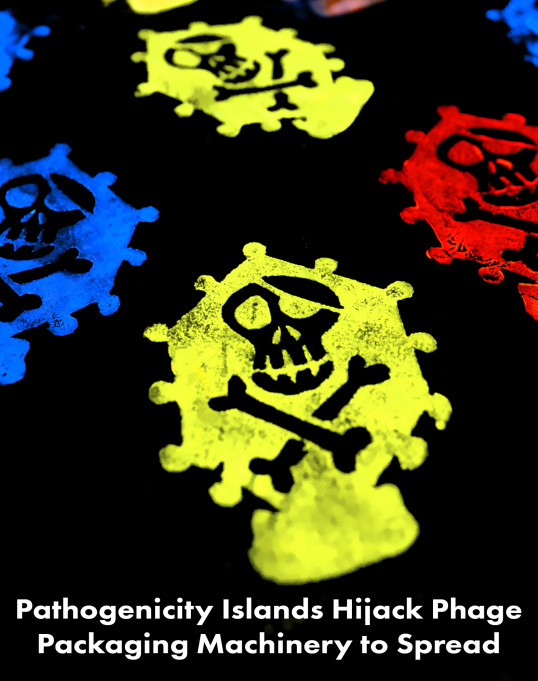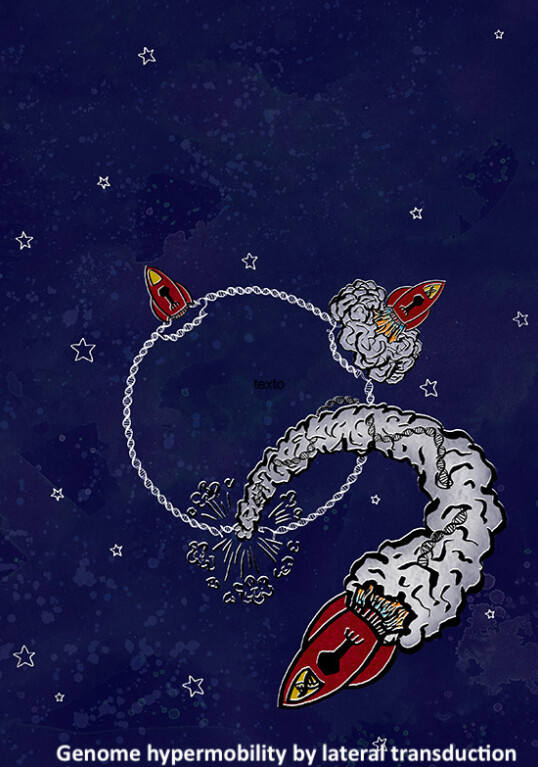Summary
Research in Penadés lab has focused for the last decade into the molecular basis of bacterial virulence, using Staphylococcus aureus as a model, with a major focus on the mechanisms underlying the transfer of different mobile genetic elements (MGEs) involved in pathogenesis. We have described that in S. aureus the genes for some superantigen toxins and for other virulence factors, especially those involved in host adaptation, are borne by a family of mobile pathogenicity islands (SaPIs). SaPIs represent the first pathogenicity island identified in staphylococci and the first for which mobility has been shown. During the last few years, we have deciphered the fascinating mechanisms involved in the transfer of these MGEs. SaPIs are 15 kb or more in size, are excised, caused to replicate, and then encapsidated with high efficiency after induction by certain staphylococcal phages. This results in an extremely high frequency of transduction, both intra- and inter-generically.
Not surprisingly, such elements are not confined to the staphylococci and we have recently identified a large set of similar elements in Gram-positive and Gram-negative bacteria, supporting the existence of a novel family of MGEs that we have defined as Phage-Inducible Chromosomal Islands (PICIs). We are now characterising this novel and widespread family of MGEs, and the roles of the PICI elements in antibiotic resistance and virulence.
Since the PICI cell cycle requires induction by bacteriophages, we have also characterised these unexplored genetic elements. Our contribution to this field has recently culminated in the discovery of a new mechanism by which S. aureus bacteriophages mobilise DNA among bacteria. We have coined this novel mechanism lateral transduction. The observed efficiency and scale of host chromosomal DNA transfer by lateral transduction is unprecedented in bacteriology.
Finally, considering that SaPIs and PICIs employ packaging mechanisms similar to phages, we have recently discovered a remarkably versatile and complex mechanism employed by SaPIs for chromosomal hypermobility while simultaneously self-transferring additional virulence genes from the host. This extraordinary mechanism, termed lateral cotransduction, allows SaPIs to perpetually repeat the process, rendering them significantly more potent and efficient in transmitting bacterial genes. These findings highlight previously unknown roles of pathogenicity islands in bacterial virulence and show that their evolutionary impact extends beyond the genes they carry.
Selected Publications
Journal Articles
Brady A, Cabello-Yeves E, Gallego Del Sol F, et al., 2023, Characterization of a unique repression system present in arbitrium phages of the SPbeta family, Cell Host & Microbe, Vol:31, ISSN:1931-3128, Pages:2023-2037.e8
Chee MSJ, Serrano E, Chiang YN, et al., 2023, Dual pathogenicity island transfer by piggybacking lateral transduction, Cell, Vol:186, ISSN:0092-8674, Pages:3414-3426.e16
Alqurainy N, Miguel-Romero L, Moura de Sousa J, et al., 2023, A widespread family of phage-inducible chromosomal islands only steals bacteriophage tails to spread in nature, Cell Host & Microbe, Vol:31, ISSN:1931-3128, Pages:69-82.e5
Fillol-Salom A, Rostøl JT, Ojiogu AD, et al., 2022, Bacteriophages benefit from mobilizing pathogenicity islands encoding immune systems against competitors, Cell, Vol:185, ISSN:0092-8674, Pages:3248-3262.e20
Humphrey S, Fillol-Salom A, Quiles-Puchalt N, et al., 2021, Bacterial chromosomal mobility via lateral transduction exceeds that of classical mobile genetic elements, Nature Communications, Vol:12, ISSN:2041-1723, Pages:1-12
Humphrey S, San Millan A, Toll-Riera M, et al., 2021, Staphylococcal phages and pathogenicity islands drive plasmid evolution, Nature Communications, Vol:12, ISSN:2041-1723, Pages:1-15
Haag AF, Podkowik M, Ibarra-Chavez R, et al., 2021, A regulatory cascade controls <i>Staphylococcus aureus</i> pathogenicity island activation, Nature Microbiology, Vol:6, ISSN:2058-5276, Pages:1300-+
Fillol-Salom A, Bacarizo J, Alqasmi M, et al., 2019, Hijacking the hijackers: escherichia coli pathogenicity islands redirect helper phage packaging for their own benefit, Molecular Cell, Vol:75, ISSN:1097-2765, Pages:1020-1030.e4
Chen J, Quiles-Puchalt N, Chiang YN, et al., 2018, Genome hypermobility by lateral transduction, Science, Vol:362, ISSN:0036-8075, Pages:207-212
Viana D, Comos M, McAdam PR, et al., 2015, A single natural nucleotide mutation alters bacterial pathogen host tropism, Nature Genetics, Vol:47, ISSN:1061-4036, Pages:361-366
Angeles Tormo-Mas M, Mir I, Shrestha A, et al., 2010, Moonlighting bacteriophage proteins derepress staphylococcal pathogenicity islands, Nature, Vol:465, ISSN:0028-0836, Pages:779-U7

